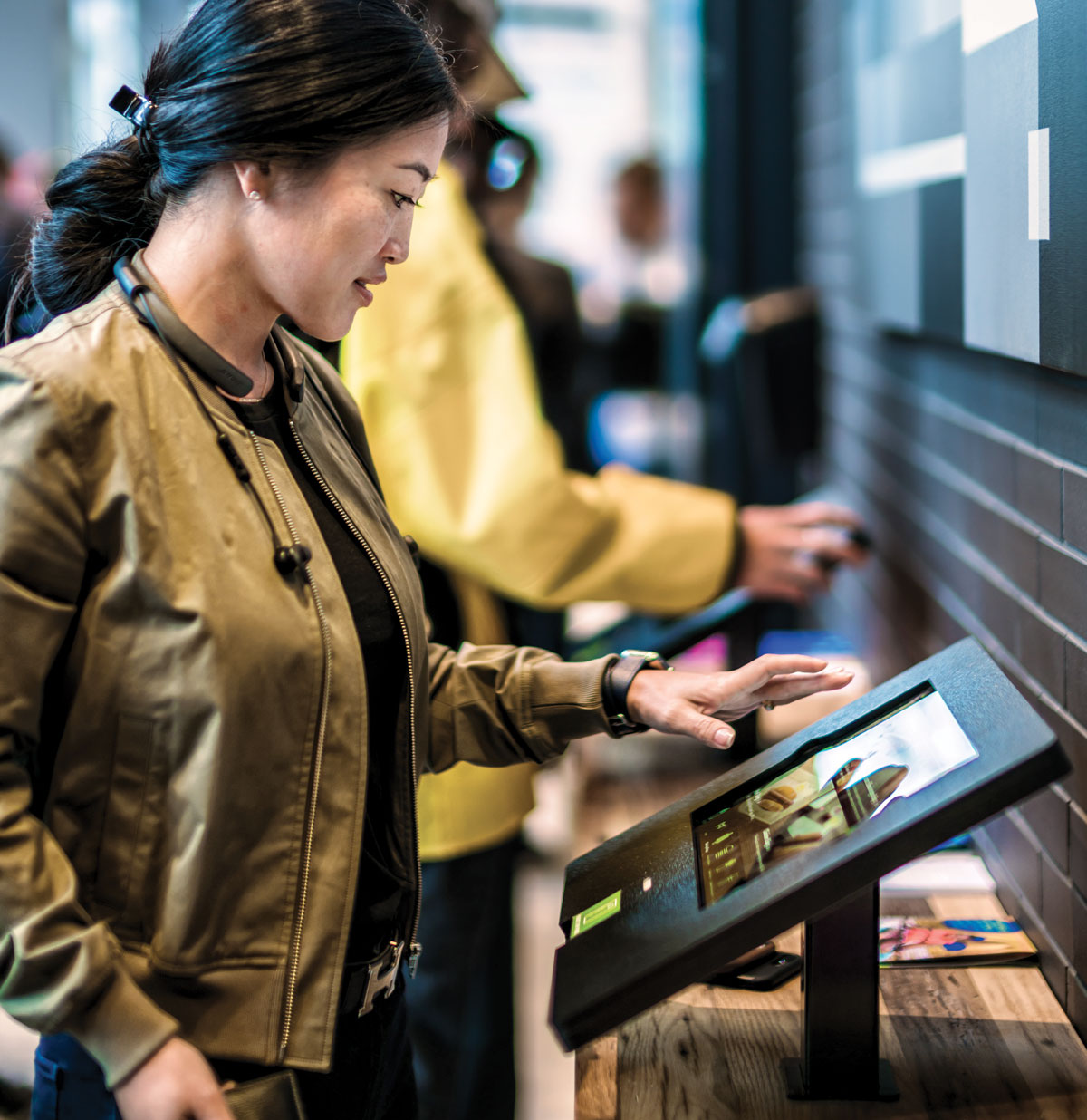While some quick serves are just now dipping their toes into the world of self-service kiosks, others, like fast-food giants Taco Bell and McDonald’s, are already hatching plans to fill their systems with the devices.
“We’re continuing to successfully test and roll out self-service kiosks in our restaurants. We’re excited to keep introducing new technology to give customers more of an opportunity to customize their orders, explore our menu, and own the ordering process,” says Rafik Hanna, senior director of all access at Taco Bell, in an email. “This also enables our team members to focus on other areas that enhance the restaurant experience. We are receiving positive feedback from our customers on kiosks and the role they play in helping to elevate the overall guest and restaurant experience.”
In mid-July, Taco Bell had kiosks in 61 stores across three markets: Orange County and Bakersfield, California, and Indianapolis. The company is aiming to have them in all locations by the end of 2019.
Similarly, McDonald’s CEO Steve Easterbrook said in a Q1 earnings call this year that the brand would be significantly increasing its kiosk presence at U.S. stores, expecting to outfit 3,000 additional restaurants with ordering kiosks by the end of the year. By that count, half of McDonald’s 14,000 stateside stores would have kiosks.
But, despite Taco Bell’s and McDonald’s enthusiastic buy-in, not every brand is going all in on kiosks, despite the allure of cutting labor costs and speeding up throughput.
Better-burger chain Shake Shack initially faced backlash when it revealed a fully automated store in New York City’s Astor Place last fall. Despite some negative press, the company isn’t abandoning its kiosk plans altogether
“We began with just one Shack at Astor Place in New York City, and have recently added kiosks at five more shacks throughout New York City and Boston,” writes CEO Randy Garutti in an email. “Guest feedback has been positive and often rates amongst our highest satisfaction scores. Our team members enjoy them as well, because it allows them to bring their hospitality into other moments of guest interaction.”
Beyond the big, multi-location brands, smaller concepts may be slower to adopt kiosk technology because of the expense associated with the machines. Rob Meiner, kiosk business unit manager for digital display manufacturing company Peerless-AV, says that after research and development costs, the typical cost per kiosk (including a display, scanner, credit card reader, and receipt printer) is about $5,000. The final cost, however, depends on what design the restaurant chooses for the machines. And of course, for a large-scale rollout, the cost per kiosk decreases, Meiner says.
However, there’s a significant return on that investment, Meiner says, with a decrease in material costs and upkeep.
“For [quick serves], kiosks can increase sales and efficiencies,” Meiner adds. “As opposed to offering a full staff of front-end cashiers, employees can perform other customer-facing roles in the dining room, such as assisting with kiosk orders and delivering food to tables, which also increases customer satisfaction.”
McDonald’s Experience of the Future restaurants take full advantage of that by freeing up employees to perform other tasks, such as running drink refills to the table and checking in with customers to ensure they’re enjoying the meal.
Healey Cypher, CEO of computer technology company Zivelo, which provides McDonald’s kiosks, says that it’s a smart idea to keep that human touch when stores add lots of kiosks. Meiner additionally notes that positive interactions with employees boost customer satisfaction when using the kiosks.
“Just because it’s easier, self-service doesn’t mean it’s supposed to dehumanize the experience,” Cypher says. He adds that some businesses are seeing a 20–30 percent “basket lift” at locations with kiosks wherein customers end up purchasing more simply because they are ordering and paying via a device.
“I think psychologically you don’t feel like there are people breathing down your neck, waiting on you to order, so that’s nice,” Cypher adds. At that rate, he estimates the kiosks pay for themselves in about three months.
Given the mix of potential benefits and challenges, only time will tell if kiosks become quick-serve mainstays. Shake Shack is still testing its kiosks. If and when the company rolls out additional kiosks in the future, those stores will likely feature a hybrid format.
“Astor Place will remain kiosk-only, but we’re testing a dual kiosk and traditional cashier-ordering model in the other five Shacks,” Garutti says. “We want to put the power of ordering in our guests’ hands.”












